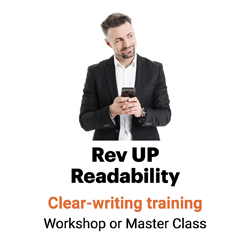33% of U.S. adults can’t calculate the cost of office supplies
Just 12% of Americans read well enough to review search results from a library website to identify a book suggesting that claims made both for and against genetically modified foods are unreliable.

Which means that if you write for these proficient readers, you’ll miss 88% of U.S. adults aged 16 to 65. Or so says the 2003 Program for the International Assessment of Adult Competencies (PIAAC).
About the study
PIAAC is a cyclical, large-scale study of adult literacy. It was developed and organized by the Organization for Economic Cooperation and Development.
The study looks at numeracy and problem solving in technology-rich environments, as well as literacy. The literacy study tested:
- Vocabulary
- Sentence comprehension
- Basic passage comprehension
In the United States, the OECD conducted the study in 2011-12. The group tested a nationally representative sample of 5,000 adults between the ages of 16 and 65.
How low can you go?
The results? U.S. adults weighed in at an average literacy rate of 270 out of 500. That puts us at level 2, or below basic, literacy skills.
That means that, on average, we can look at a chart of generic drug use in 15 countries and count the number of countries in which the generic drug market accounts for 10% or more of drug sales. But we struggle to review an organization’s website with several links, including “contact us,” and identify which link will lead to the organization’s phone number.
That score also puts us at the bottom of the pack internationally.
Nonliterate
Below level 1: 0-225
Percentage of U.S. adults 16+: 5%
Skills: Locate a single piece of information in familiar copy.
Sample task: Review a simple table identifying three candidates and the number of votes they received to identify which candidate earned the fewest votes.
Below basic
Level 1: 226-275
Percentage of U.S. adults 16+: 14%
Skills: Read relatively short digital, print or mixed copy to locate a single piece of information.
Sample task: Review two paragraphs and a chart of generic medicine usage in 15 countries to count the number of countries in which the generic drug market accounts for 10% or more of drug sales.
Basic
Level 2: 276-325
Percentage of U.S. adults 16+: 34%
Skills: Find information that may require low-level paraphrasing and drawing low-level inferences.
Sample task: Review a website with several links, including “contact us” and “FAQ” and identify the link leading to the organization’s phone number.
Intermediate
Level 3: 326-375
Percentage of U.S. adults 16+: 36%
Skills: Click to the second page of search results from a library website to identify the author of a book called Ecomyth.
Sample task: Review an illustration of a flattened box identifying its dimensions, then identify which of four pictures bests represents the assembled box.
Proficient
Level 4/5: 376-500
Percentage of U.S. adults 16+: 12%
Skills: 4: Perform multiple-step operations to integrate, interpret or synthesize information from complex texts, which may require complex inferences.5: Integrate information across multiple dense texts; construct syntheses, ideas or points of view; or evaluate evidence-based arguments.
Sample task: Review search results from a library website to identify a book suggesting that the claims made both for and against generically modified foods are unreliable.
Where we fit in worldwide
Our average literacy score of 270 gives the United States:
- Lower overall literacy scores than the international average
- A higher percentage of low performers than the international average
- A larger literacy gap between lower and higher socio-economic groups than internationally
Worse: Our overall literacy score has taken a three-point dive since 1994.
The only good news in this bleak report: The oldest U.S. adults in the study outperformed the oldest adults internationally in literacy.
We’re No. 13!
(We should try harder)

Three types of literacy To be effective in their daily lives, your audience members need prose, document and qualitative literacy.
What this means for communicators
How do you communicate in an environment where many people can barely read? Write for most people. Learn to increase readability.
And if you’re telling yourself that your audience can read at an 11th-grade level, well, then, you’re probably lying to the person you love most.
Bottom line: Are you smart enough to write for a fifth-grader?

Leave a Reply